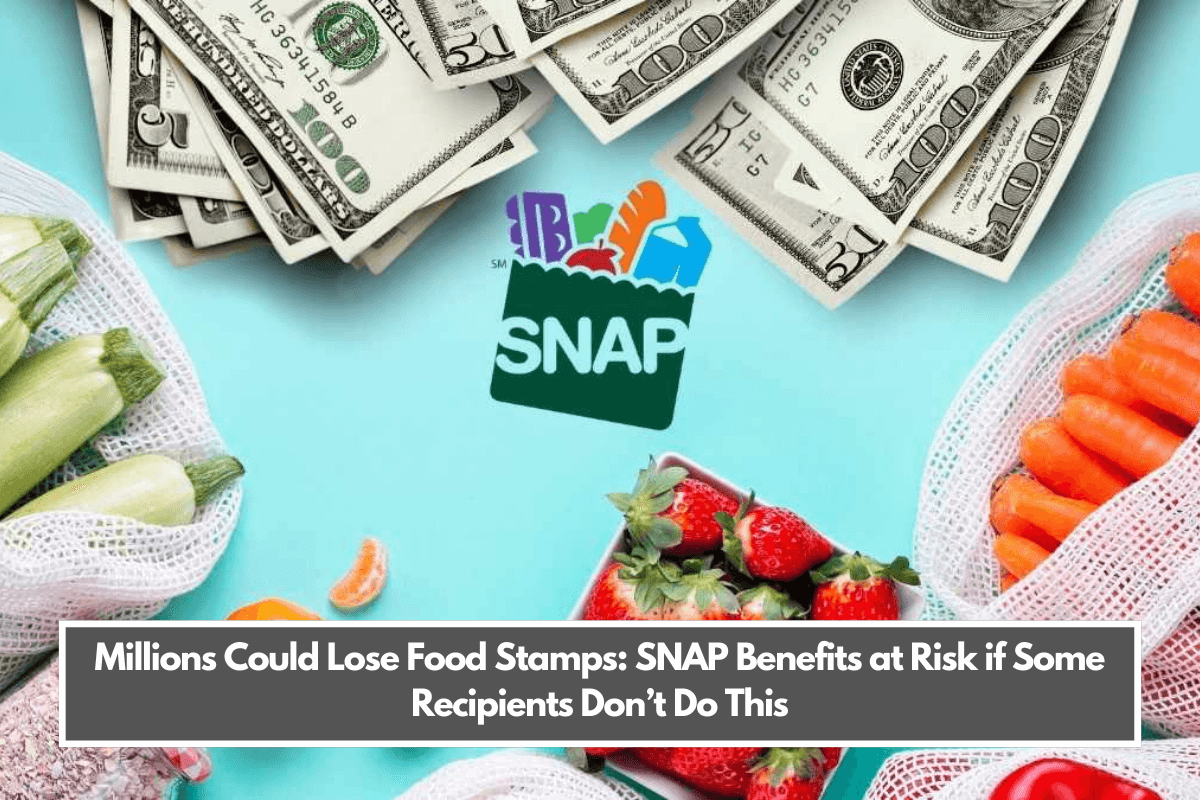The Supplemental Nutrition Assistance Program (SNAP) is starting the new year with big changes that could affect millions of American families. In fact, many of them could lose their food stamps (as the program used to be called) if they do not do something.
The Food and Nutrition Service (FNS) of the United States Department of Agriculture (USDA) made these changes to SNAP benefits so that they are more in line with the cost of living and so that low-income households can still get enough food.
Stricter requirements to qualify for SNAP benefits
At the moment, the SNAP program is talking about putting in place stricter work requirements as a possible measure. By making beneficiaries work longer hours, these changes are meant to make it harder for people to get into the program.
But experts warn that they could hurt low-income families that depend on SNAP to meet their basic food needs. As things stand, some adults who do not have any dependents already have to work at least 20 hours a week to keep their eligibility.

Able-bodied adults without dependents (ABAWDs) are the name for this group of people who can get help. The people in this group are between the ages of 18 and 49 and do not depend on anyone else. Currently, ABAWDs need to work at least 20 hours a week or go to job training programs to keep their status.
If the new rules are approved, these requirements could be made stricter. This would make it harder for people who already have problems getting to work, like not having a way to get there or being sick. That is why experts say people who feel like they belong in this group should talk to their social worker to see what they need to do to keep their benefits.
Increases in maximum allocations for 2025
One of the most significant adjustments to SNAP this year is the increase in maximum allocations. These modifications, effective for the 48 contiguous states and Washington, D.C., were increased by the cost of living adjustment (COLA), which was 2.5% for 2025, and present the following breakdown:
- Household of 1 person: $292
- Household of 2 people: $536
- Household of 3 people: $768
- Household of 4 people: $975
- Household of 5 people: $1,158
- Household of 6 people: $1,390
- Household of 7 people: $1,536
- Household of 8 people: $1,756
- For each additional person: add $220
In Alaska, benefits range from $1,258 to $1,953, and in Hawaii, they go up to $1,723. On the other hand, the limits are $1,437 for Guam and $1,254 for the US Virgin Islands. For the 48 states and D.C., the minimum profit stays at $23. Alaska, Hawái, and Hawái have different minimum profits of $30 to $47.
How to apply for SNAP in 2025
The application process is still clear and easy to use for people who want to use SNAP for the first time or renew their membership. These are the main steps:
- Check your eligibility: Use the USDA’s online tool to determine if you qualify. Eligibility is based on income, household size and available resources.
- Gather the necessary documents: Among them, you should include:
- Proof of identity (driver’s license or passport)
- Social Security numbers of household members
- Records of income and expenses (rent, utilities, medical bills)
- Submit your request: You can do this online, by mail, or in person at your state’s local SNAP office. Each state has its own application portal.
- Complete the interview: Most applicants must complete an interview, either by phone or in person, to confirm their eligibility. This stage is crucial for the approval of the benefit.
You can find a list of resources on the USDA website that will help you find the SNAP office closest to you so you can start your application tomorrow. The map will show you all the states, and when you click on the one where you live, the list of places will appear.
Also See :-$967 SSI Benefits Are Scheduled to Arrive Earlier Than Expected

